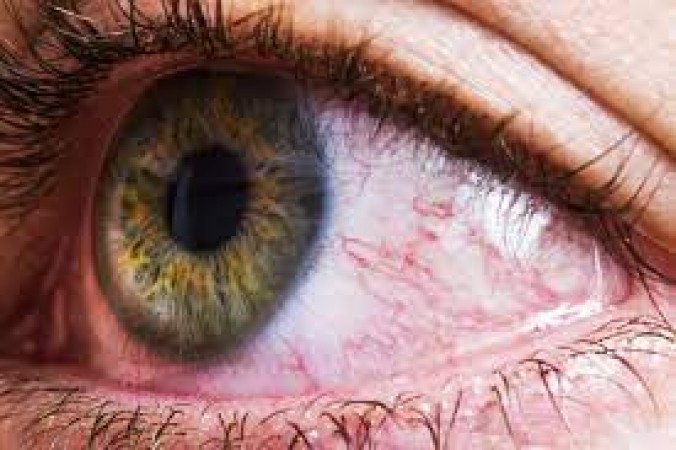Bloodshot eyes are often dismissed as a minor inconvenience, but they can actually be indicative of underlying health issues. This seemingly innocuous symptom can serve as a red flag, alerting us to the presence of potentially life-threatening conditions. In this article, we delve into the world of bloodshot eyes, exploring the causes, symptoms, and consequences of ignoring this silent alarm.
The Hidden Clues in Bloodshot Eyes
Understanding Bloodshot Eyes
Bloodshot eyes, known as red eyes in common parlance, occur when the blood vessels in the white part of the eye (the sclera) become dilated or inflamed. This redness can be caused by various factors, ranging from minor irritants to severe medical conditions.
Common Causes of Bloodshot Eyes
-
Conjunctivitis: The Usual Suspect
- Conjunctivitis, or pink eye, is one of the most common causes of bloodshot eyes. It is often a result of viral or bacterial infections.
-
Allergies: The Hidden Trigger
- Allergic reactions can lead to bloodshot eyes. Allergens such as pollen, dust, and pet dander can set off this response.
-
Dry Eye Syndrome: A Chronic Culprit
- Chronic dry eyes can cause redness due to the eye's natural response to irritation.
-
Digital Eye Strain: The Modern Epidemic
- Excessive screen time and digital eye strain are increasingly causing redness and discomfort.
When Bloodshot Eyes Aren't So Innocent
While the above causes are relatively benign, there are instances where bloodshot eyes indicate more serious underlying health issues:
-
Hypertension: The Silent Killer
- Persistent redness in the eyes can be a sign of high blood pressure, a condition that can lead to heart disease and stroke.
-
Diabetes: A Warning Sign
- Diabetic retinopathy can cause redness and is a severe complication of diabetes.
-
Glaucoma: A Stealthy Threat
- Glaucoma, a leading cause of blindness, can manifest as red eyes in some cases.
-
Uveitis: A Rare but Serious Inflammation
- Uveitis, an inflammation of the uvea, can lead to redness and requires immediate medical attention.
Ignoring Bloodshot Eyes: The Risks
Why Ignoring Red Eyes is a Bad Idea
-
Delayed Treatment
- Ignoring bloodshot eyes can delay the diagnosis and treatment of underlying health conditions, leading to more severe consequences.
-
Complications
- Serious conditions like glaucoma or diabetic retinopathy can worsen if left untreated, potentially causing permanent damage to the eyes.
-
Quality of Life
- Chronic discomfort and reduced vision can significantly impact one's quality of life.
Seeking Help and Treatment
When to See a Doctor
-
Persistent Redness
- If your bloodshot eyes don't improve after a day or two, it's time to seek medical advice.
-
Pain or Vision Changes
- Any pain, vision changes, or discharge should prompt a visit to an eye specialist.
-
Underlying Health Conditions
- If you have known health issues like hypertension or diabetes, regular eye check-ups are crucial.
Treatment Options
-
Prescription Eye Drops
- Depending on the cause, your doctor may prescribe eye drops to relieve redness and discomfort.
-
Managing Underlying Conditions
- Treating conditions like hypertension or diabetes can help alleviate eye redness.
-
Lifestyle Changes
- Reducing digital eye strain, avoiding allergens, and staying hydrated can prevent bloodshot eyes.
Bloodshot eyes should not be dismissed as mere inconveniences. They can be early warning signs of serious health issues, and timely intervention is essential. Regular eye check-ups and prompt medical attention can help safeguard your vision and overall well-being.
